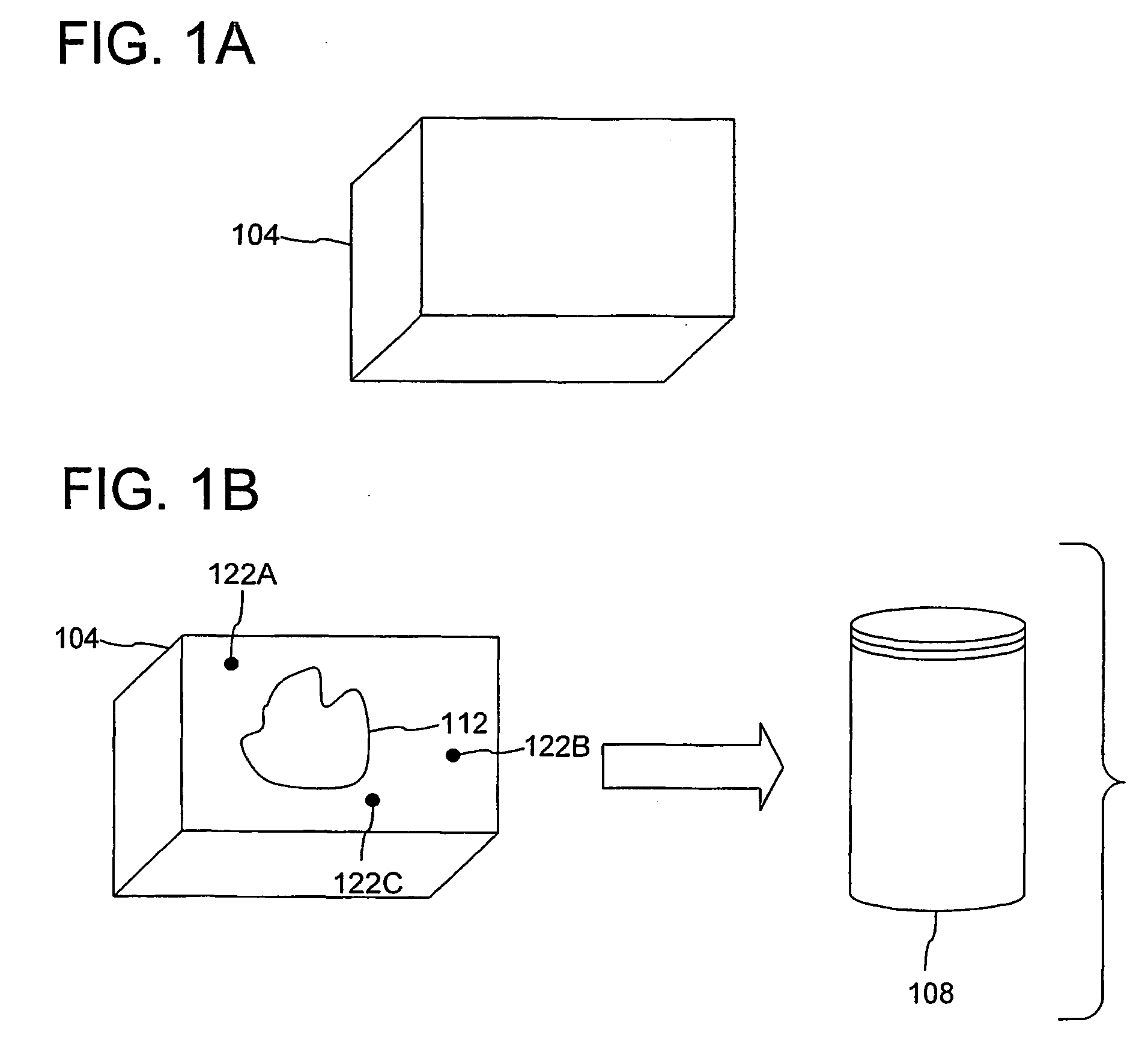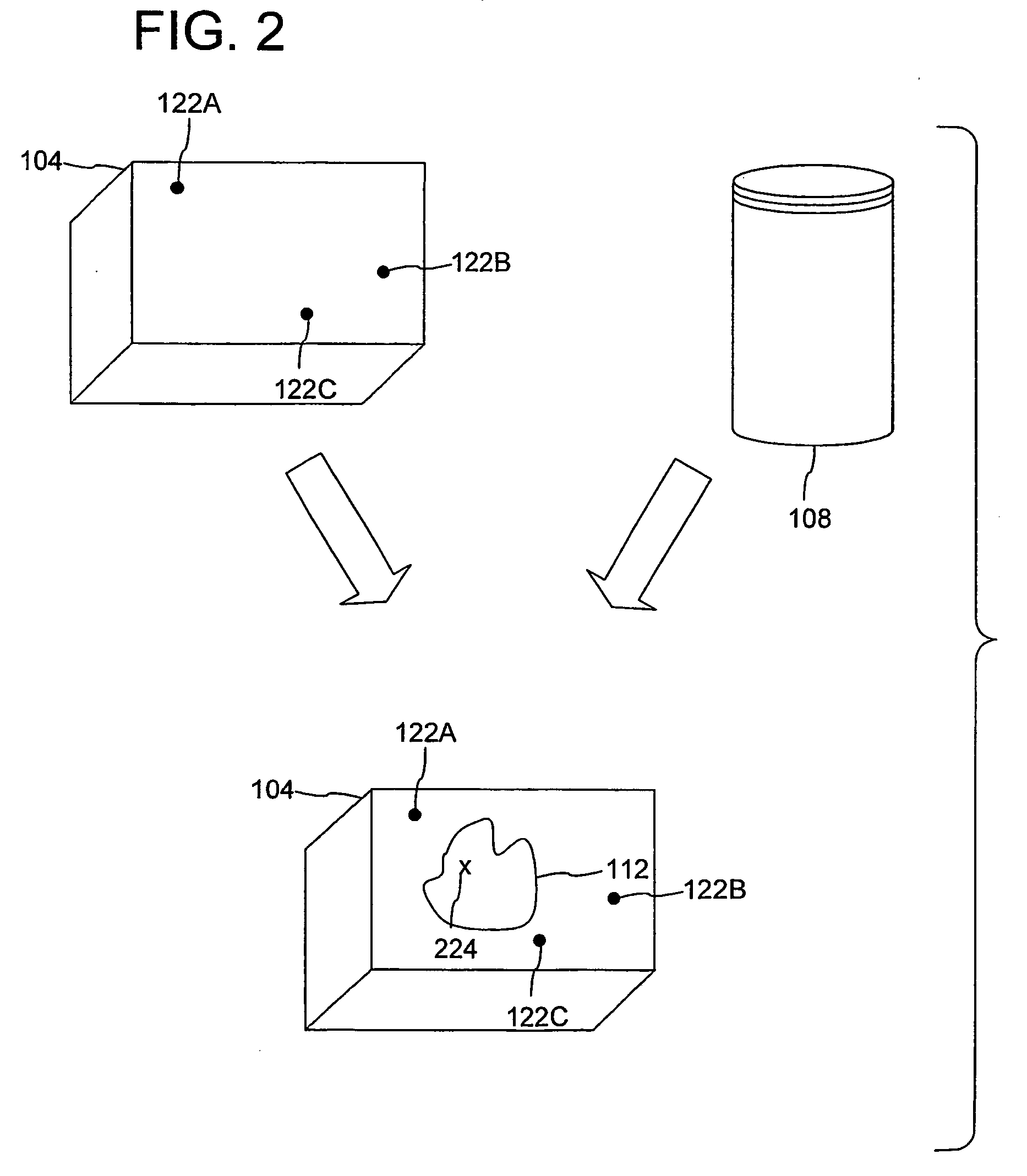Method and system for processing regions of interest for objects comprising biological material
a biological material and object technology, applied in the field of biological material processing, can solve the problems of preventing efficient processing of regions of interest, affecting the efficiency of the techniques available in the field of automated assembly fail to provide a way to efficiently process donor and recipient blocks, etc., to achieve the effect of better comparison
- Summary
- Abstract
- Description
- Claims
- Application Information
AI Technical Summary
Benefits of technology
Problems solved by technology
Method used
Image
Examples
example 2
Physical Object
[0096] FIG. 5 shows a physical object 504 including a set of reference points 512, 514, and 516 on the object. In the example, the reference points can be identified because they are of different colors (e.g., red, green, and blue). However, a variety of other techniques can be used. For example, different shapes or sizes can be used. The advantage of such an arrangement is that the identity of the reference points can be determined if the object is rotated or a mirror image or some other distortion of the physical object is obtained. For convenience, a representation of the reference points stored in a computer-readable medium might indicate an identifier (e.g., "2").
[0097] FIG. 6 shows a physical object 604 including a set of reference points 612, 614, and 616 on the object are placed at locations with respect to the edges to facilitate determining identity of the reference points. In the example, the physical object 604 is rectangular in shape and thus has 4 edges....
example 3
[0102] Although some examples show a single region of interest for an object, there may be one or more regions of interest on an object. Information indicating the location and extent of a region of interest can be stored in computer-readable media for retrieval at a later time. The regions of interest can take a variety of shapes and sizes. In addition, it may be advantageous to define certain regions inside a region of interest as not being part of the region of interest.
[0103] In some cases, the region of interest may contain a removable resource. In such a scenario it may be advantageous to track removal of the resource to determine how much, if any, of the resource remains for a set of regions, a region, a set of objects, or an object. Such an arrangement can be accomplished by maintaining a database identifying the regions, the objects, and the amount of resource remaining. When a resource is removed, the database can be updated to so reflect.
example 4
Generating Information Indicating a Region of Interest
[0104] FIG. 7 shows an exemplary method 702 for generating information indicating the location and extent of a region of interest for a physical object. In the example, the information is indicated with respect to reference points of the object. At 704, an image representative of the physical object is captured. At 708, a region of interest for the physical object is denoted. As described in more detail below, such denotation can be achieved by physically marking the physical object, but physical marking is not required. Also, such denotation can be achieved by tracing a region of interest on an image representing the physical object, whether or not the object has been physically marked. At 712, reference points for the physical object are found. Given the reference points and the denoted region of interest for the image representing the physical object, a computer system can store information indicating the location and extent o...
PUM
 Login to View More
Login to View More Abstract
Description
Claims
Application Information
 Login to View More
Login to View More - R&D
- Intellectual Property
- Life Sciences
- Materials
- Tech Scout
- Unparalleled Data Quality
- Higher Quality Content
- 60% Fewer Hallucinations
Browse by: Latest US Patents, China's latest patents, Technical Efficacy Thesaurus, Application Domain, Technology Topic, Popular Technical Reports.
© 2025 PatSnap. All rights reserved.Legal|Privacy policy|Modern Slavery Act Transparency Statement|Sitemap|About US| Contact US: help@patsnap.com



